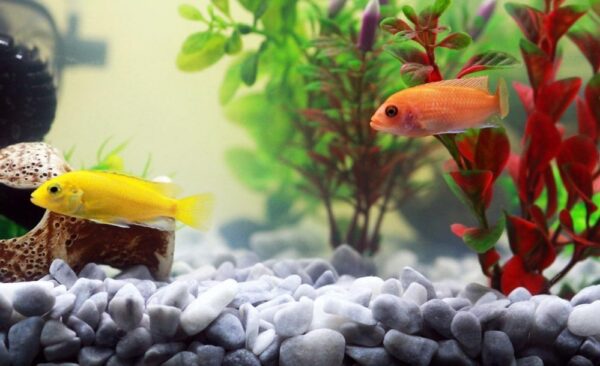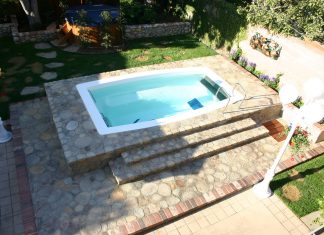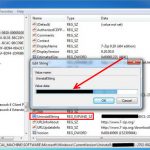Keeping a well-maintained tank can make your fish and other organisms in it happy. Regular cleaning and equipment check ensures everything works to create a clean and healthy environment for your aquatic pets to thrive.
However, cleaning can become a chore and may even get costly over time. Your fish can get sick, plants turn yellowy, and algae may even come back as soon as you clean it. You may even notice a surge in your energy bills or find yourself spending more on aquarium equipment to make sure it’s clean.
Reducing Maintenance Cost
While some of these are necessary expenses to ensure proper maintenance, it helps to know some tricks to keep your tanks in tip-top shape without breaking the bank. You can lower your aquarium maintenance costs by trying out the following:
1. Add Live Plants
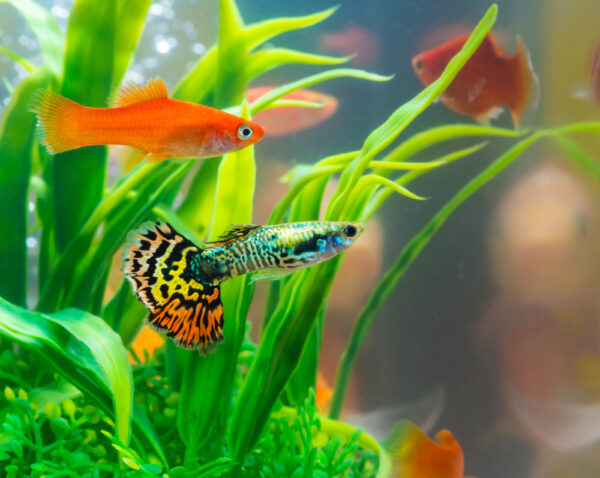
Adding one or two live plants not only makes your aquarium lush and lively, but it can also benefit your fish. Plants provide oxygen and absorb carbon dioxide and ammonia. They also give your fish home and even reduce algae growth.
Just remember to put plants that go with the type of your aquarium and fish: tropical plants for tropical fish and cold-water species for the same kind of plants. Trim and remove fallen leaves to keep them from rotting and producing harmful chemicals. Apart from pruning, make sure to give your plants adequate nutrients to keep them healthy. You can click here for fertilizer suggestions.
2. Don’t Overfeed Your Fish
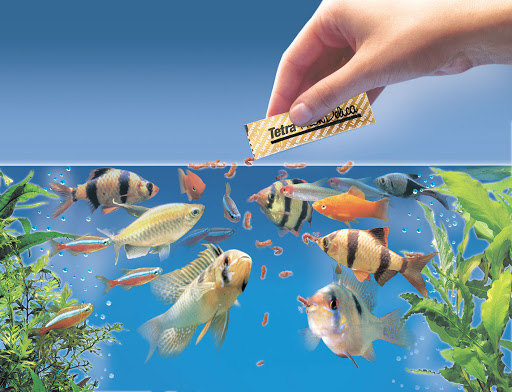
Fish require adequate amounts of food to grow but don’t get too excited and give them a lot since it does more harm than good to your fish and your tank. Experts advise giving fish food they can consume in two minutes and also removing any leftovers after an hour.
Use a siphon to remove buildup so it doesn’t produce toxic compounds that could threaten the health of fish and plants.
3. Include Algae Eaters
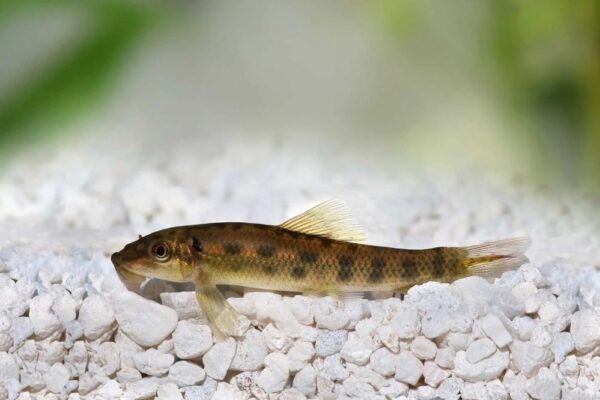
If you can’t wait for an hour, you can rely on other aquatic creatures to consume leftover fish food. They also eat algae growing on plants, rocks, and walls. If you stick with fish-only aquariums, you can rely on Siamese algae eater, Oto cats, and Bristlenose Pleco to do the trick.
If you want more than fish, shrimps and snails can make your aquarium diverse and interesting. Having algae eaters in your tank is an efficient way of eliminating algae without using equipment or cleaning as often.
4. Keep An Aquarium Log

An aquarium log or journal helps you keep track of your aquarium’s condition. While you’re feeding the fish, jot down water temperature and anything that might seem unusual. You can see trends in your entries, which can help you spot issues easier.
In addition, an aquarium log also keeps track of your maintenance schedules. This daily record also reminds you it’s time for a bi-weekly or monthly cleanup and what aquarium equipment needs to be cleaned or replaced. Having a fish tank log can help you manage your budget since you can anticipate buying supplies.
5. Use Adequate Lighting
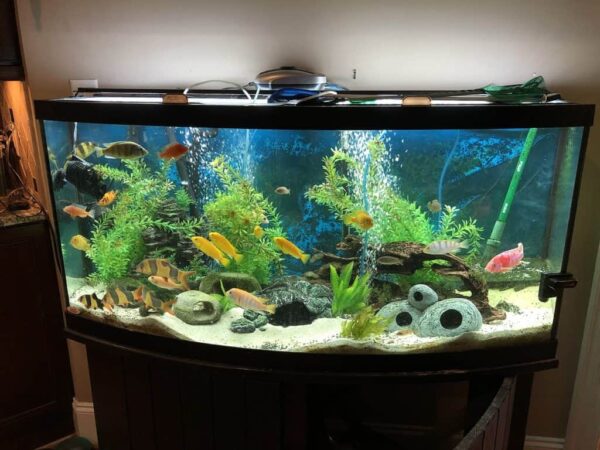
Adequate lighting helps you see and appreciate your fish better and helps plants grow. Most tanks require 10-12 hours of lighting and may even increase depending on the type of plants and animals you have in your tank. Connect an on-off timer to make aquarium lighting hassle-free.
Choose fluorescent or LED lights for aquarium lighting as they’re less expensive and don’t transfer heat into the tank. You can even dim LEDs to extend lamp life and reduce energy costs.
Putting your aquarium in a strategic spot also maximizes ambient lighting. This way, your lighting equipment won’t get overworked. Also, place your tank away from windows since this can lead to algae growth.
6. Rinse Filters And Use Filter Floss
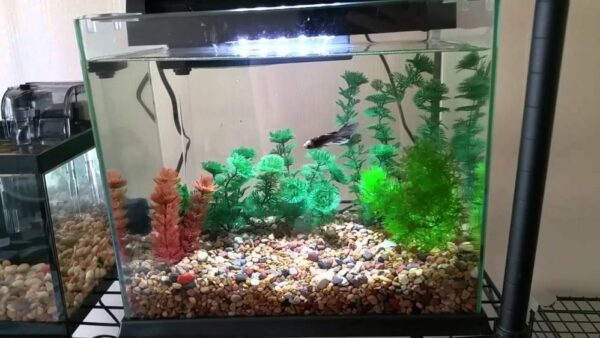
Filter cleaning and replacement is an essential aquarium maintenance task. Filters are replaced every two to four weeks to ensure they can effectively remove waste materials from the tank. One way you can save on costs is to rinse the filters using water drawn from the tank. Doing so removes decaying materials trapped in the filter without stripping away beneficial bacteria.
You can also choose filter floss as an inexpensive alternative to catch aquarium debris. If you want a DIY version, use polyester fiberfill or pillow stuffing. Look for ones that are unscented and dye-free, so they won’t harm your fish. You need to cut them into desired lengths and place them in your filter. They’re a cheaper alternative to filter replacement cartridges, but you may need to replace them every four to six days to keep your tank water crystal clear.
7. Set Up A DIY Water Exchange System
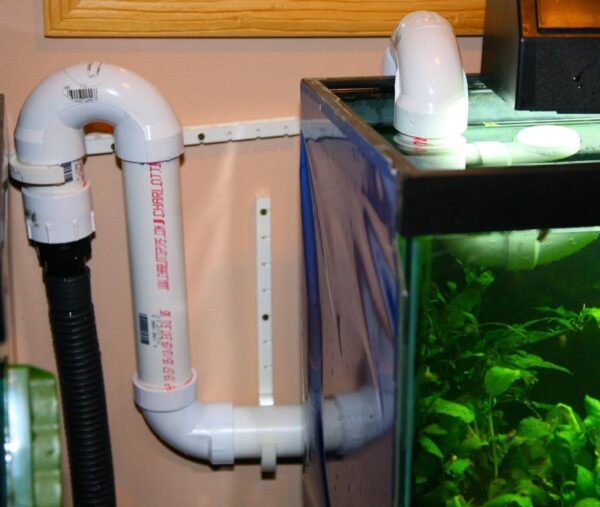
Large tanks can be burdensome to clean since you’ll need to replace large quantities of water every two weeks. You can save time and effort by building a DIY water exchange system using pipes to fit your tank requirements. You can find videos and tutorials online to help you out with this project.
8. Keep Cleaning Materials Handy And Updated
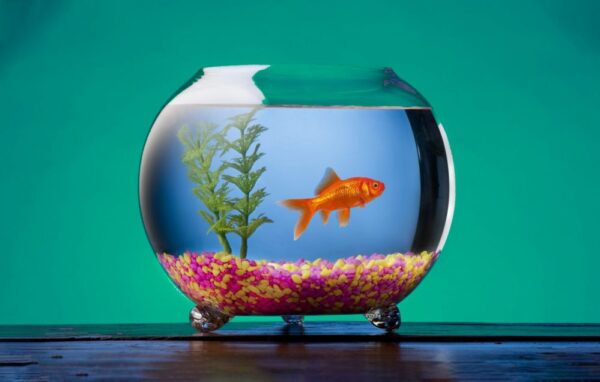
Aquariums require cleaning from time to time, and it can be more efficient if you have all materials handy and updated. Use a dedicated aquarium bucket for cleaning, then put additional cleaning materials inside. Don’t forget to take care of your cleaning equipment as well. Soak nets in a disinfecting solution and rinse algae scrubbers.
It’s also best to check the expiry dates. Use them as directed and don’t use them beyond the date specified.
Conclusion
Aquarium maintenance is necessary if you want your self-made marine ecosystem to be clean and healthy. You can reduce time, cost, and effort by doing simple routine checks and using cost-effective equipment and cleaning materials.
Keeping an aquarium log helps you monitor your tank’s condition and keep track of maintenance schedules. Make the most out of bi-weekly or monthly routine using siphons, a DIY water replacement system, and filter floss. You can even add living organisms to clean your tank and rid of unwanted algae naturally. It also helps to clean nets and other materials after every routine. Doing all these can leave the stress out of maintaining and more time to enjoy your fish tank longer.

